Heavyweight Cotton (GSM Explained)
What is heavyweight Cotton and how is it used in the fashion industry
When deciding on durable clothing or textiles, understanding fabric weight can make the difference between a purchase that lasts years versus one that disappoints after a few washes. GSM stands for grams per square meter, and it’s the crucial factor that determines how a fabric weighs, feels, and performs over time. Fabric weight is measured in grams per square meter (GSM), providing a standardized way to compare fabric density across different materials. GSM is a direct indicator of the fabric’s weight; while it often correlates with thickness and overall bulkiness, it does not always equate to precise thickness, as different fabrics can have similar weights but varying properties. The GSM measurement significantly affects the fabric’s characteristics, including its feel, drape, durability, and warmth. Heavyweight cotton fabrics offer superior durability, better structure, and enhanced warmth compared to their lightweight counterparts, making them essential for workwear, winter clothes, and quality garments that need to withstand wear.
In clothing, GSM indicates the weight of the fabric used to make the garment, measured as grams per square meter of fabric. This measurement helps consumers and manufacturers understand the fabric's density, thickness, and durability, which directly influence the garment's comfort, warmth, and longevity. Higher GSM values generally mean heavier, thicker, and more durable clothing, while lower GSM values indicate lighter, thinner, and more breathable fabrics.
In this comprehensive guide, we’ll explore everything you need to know about heavyweight cotton GSM, from understanding fabric weight measurements to choosing the right fabric for your specific needs. Whether you’re selecting materials for a durable heavyweight cotton t shirt, a heavyweight white tee, heavy-duty workwear, or home textiles, this knowledge will help you make informed decisions that deliver better quality and longer-lasting results.
Heavyweight cotton refers to cotton fabrics weighing 340 GSM (grams per square meter) or more. GSM measures fabric density by weighing a one-meter by one square meter piece of cotton fabric, providing a standardized way to compare different materials across manufacturers and regions. Fabric thickness is a related but distinct measurement, typically expressed in millimeters, and is especially important in technical or industrial applications where the physical thickness of the fabric matters for performance or safety.
To understand heavyweight cotton, it’s helpful to see how it compares to other fabric weights:
-
Lighter fabric / Lightweight fabrics: Under 170 GSM (summer shirts, lightweight t shirts, floaty blouse styles)
-
Medium-weight fabrics: 170-340 GSM (standard t shirts, casual clothing)
-
Heavier fabric / Heavyweight fabrics: 340+ GSM (heavy t shirts, heavyweight white tee, workwear, canvas, denim)
Heavier fabrics are more durable, provide better insulation, and are ideal for long-lasting garments and cold weather conditions.

The higher GSM fabric contains more cotton fibers per square meter, resulting in thicker fabric that provides more structure, warmth, and durability. While a lighter fabric might weigh 120-160 GSM, heavier fabric like heavyweight cotton can range from 340 GSM up to 700+ GSM for ultra-heavy applications like industrial canvas or thick denim. Heavyweight cotton is less breathable than lightweight cotton due to its dense, thick weave. The fabric’s weight correlates with both GSM and fabric thickness, but GSM is a measure of the fabric’s bulk rather than its precise thickness.
Understanding fabric weight helps you select the right fabric for your intended use. A low GSM fabric works well for hot weather and breathable garments, while higher GSM materials excel in cooler climates and applications requiring enhanced durability. Lower GSM is associated with lighter, more breathable fabrics that are comfortable for summer wear or layering.
Heavyweight Cotton GSM Ranges and Categories
Heavyweight cotton spans several distinct weight categories, each suited to different applications and performance requirements. Here’s how the ranges break down in the following list:
Medium Heavyweight: 340-450 GSM
This range represents the entry point into heavyweight territory. Fabrics in this category include:
-
Heavy jersey knits for premium t shirts, including heavyweight white tees
-
Lightweight denim for jeans
-
Canvas for casual bags and light-duty applications
-
Twill fabrics for chinos and work pants
Medium heavyweight fabrics are durable enough for regular wear while still allowing the wearer to feel comfortable, making them ideal for items like heavyweight cotton t shirts, khakis, and lightweight jackets. These heavyweight cotton t shirts are often available in a wide range of colors, offering versatility and customization options to suit different preferences.
Heavy: 450-600 GSM
These materials offer substantial weight and durability:
-
Standard denim for quality jeans
-
Heavy canvas for outdoor gear
-
Duck cloth for workwear and upholstery
-
Thick fleece and terry cloth
Ultra-Heavy: 600+ GSM
The heaviest cotton fabrics available, typically used for:
-
Extra-heavy denim for premium jeans
-
Industrial canvas for tarpaulins and awnings
-
Heavy-duty workwear fabrics
-
Thick upholstery materials
|
GSM Range |
Category |
Typical Applications |
Fabric Examples |
|---|---|---|---|
|
340-450 |
Medium Heavyweight |
Heavy t shirts, lightweight denim, casual bags |
Jersey knit, light canvas, twill |
|
450-600 |
Heavy |
Standard jeans, workwear, outdoor gear |
Denim, duck cloth, heavy canvas |
|
600+ |
Ultra-Heavy |
Premium denim, industrial uses, upholstery |
Extra-heavy denim, industrial canvas |
Different cotton weaves affect how weight feels and performs even at the same GSM. A plain weave creates a balanced, durable fabric, while twill weaves offer diagonal strength and a distinctive texture. Canvas weaves, using thicker yarns in a plain pattern, maximize durability and create the heaviest fabrics at any given GSM number.
Properties and Characteristics of Heavyweight Cotton
Heavyweight cotton delivers distinct advantages that set it apart from lighter materials. The quality and type of fibres used in heavyweight cotton play a crucial role in its durability and performance, as longer and stronger fibres contribute to a more robust and long-lasting fabric. Customers often seek out heavyweight cotton for its reputation for lasting wear and reliable performance, with many customer reviews highlighting its superior durability and comfort. It’s important to note that different fibres can influence the feel, insulation, and breathability of fabrics even at the same GSM, so fibre composition should be considered alongside GSM. These properties make it valuable for applications requiring longevity, structure, and performance under stress.
Durability Benefits
The dense construction of heavyweight cotton provides exceptional resistance to wear and tear. More fibers per square metre create a thicker fabric that naturally resists:
-
Abrasion damage: The extra material layers protect against friction and rubbing
-
Tearing: Dense fiber networks distribute stress more effectively
-
Pilling: Higher GSM fabrics maintain their surface integrity longer
-
Stretching: The substantial structure resists deformation over time
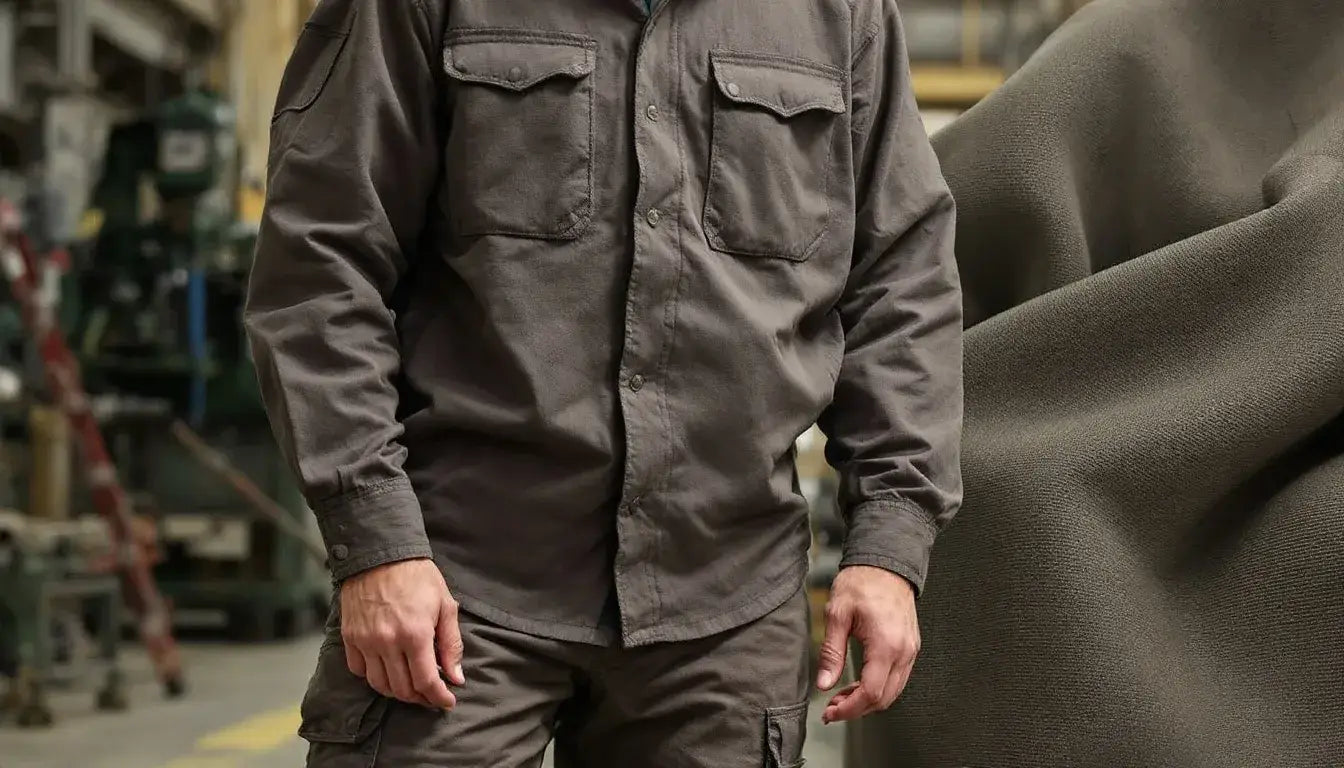
Heavyweight cotton garments
typically last 2-3 times longer than their lightweight counterparts when subjected to regular washing and daily wear. This extended lifespan makes them ideal for workwear, where garments must withstand repeated stress while maintaining their protective properties.
Many customers have bought heavyweight cotton t shirts repeatedly over the years because of their durability and long-lasting quality.
The hard wearing nature of these fabrics means they actually improve with age in many cases. A heavyweight cotton t shirt or heavyweight white tee often becomes more comfortable after multiple washes while retaining its original shape and structure. The thickness of heavyweight cotton helps it hold its shape, reducing the likelihood of stretching, pilling, or becoming misshapen after frequent washing.
Comfort and Performance
Despite their substantial weight, heavyweight cotton fabrics offer unique comfort characteristics:
Breathability: While denser than lightweight fabric options, quality heavyweight cotton still allows air circulation. The natural cotton fibers retain their moisture-wicking properties, though the thicker construction provides better insulation.
Temperature regulation: These materials excel in cooler conditions, providing warmth without the bulkiness of synthetic alternatives. The substantial weight helps maintain consistent body temperature in variable conditions.
Hand feel: Heavyweight cotton develops a distinctive feel over time. Initially firmer than lighter fabrics, it softens with wear while maintaining its structural integrity. This combination of substance and comfort explains why premium brands often use higher GSM materials.
Drape characteristics: While heavyweight cotton provides more structure than lighter alternatives, quality fabrics still drape naturally. The way a garment drapes depends on both GSM and weave construction, with well-made heavyweight pieces offering elegant fall and movement. Heavyweight cotton t shirts are not only comfortable but also stylish, making them suitable for a variety of looks.
The main trade-offs include increased weight for the wearer and slower drying times after washing. However, these factors are often offset by the superior durability and professional appearance that heavyweight cotton provides.
Common Applications for Heavyweight Cotton
The versatility of heavyweight cotton makes it suitable for diverse applications across clothing, home textiles, and industrial uses. There are a ton of applications for heavyweight cotton, and a large quantity of heavyweight cotton t shirts are produced to meet the diverse needs of consumers worldwide. For winter clothing and blankets, heavyweight cotton offers warmth and insulation, though wool is often denser and provides superior insulating properties, making it a common choice for luxury coats and blankets. Heavyweight cotton is often the go-to choice for workwear and durable home textiles due to its strength and reliability. Very heavyweight fabrics, defined as 400+ GSM, are used for items requiring maximum durability and strength, such as jackets and upholstery. Understanding these applications helps identify when higher GSM materials provide the best value.
Garment Applications
Workwear and Professional Clothing
-
Heavy-duty shirts and pants that resist staining and wear
-
Uniforms requiring frequent washing and professional appearance
-
Safety garments needing extra protection layers
Casual and Fashion Items
-
Quality jeans and denim jackets
-
Hoodies and sweatshirts for warmth and durability
-
Structured blazers and jackets
-
Winter clothes requiring insulation properties
-
Athletic wear for contact sports needing abrasion resistance
-
Outdoor recreation garments
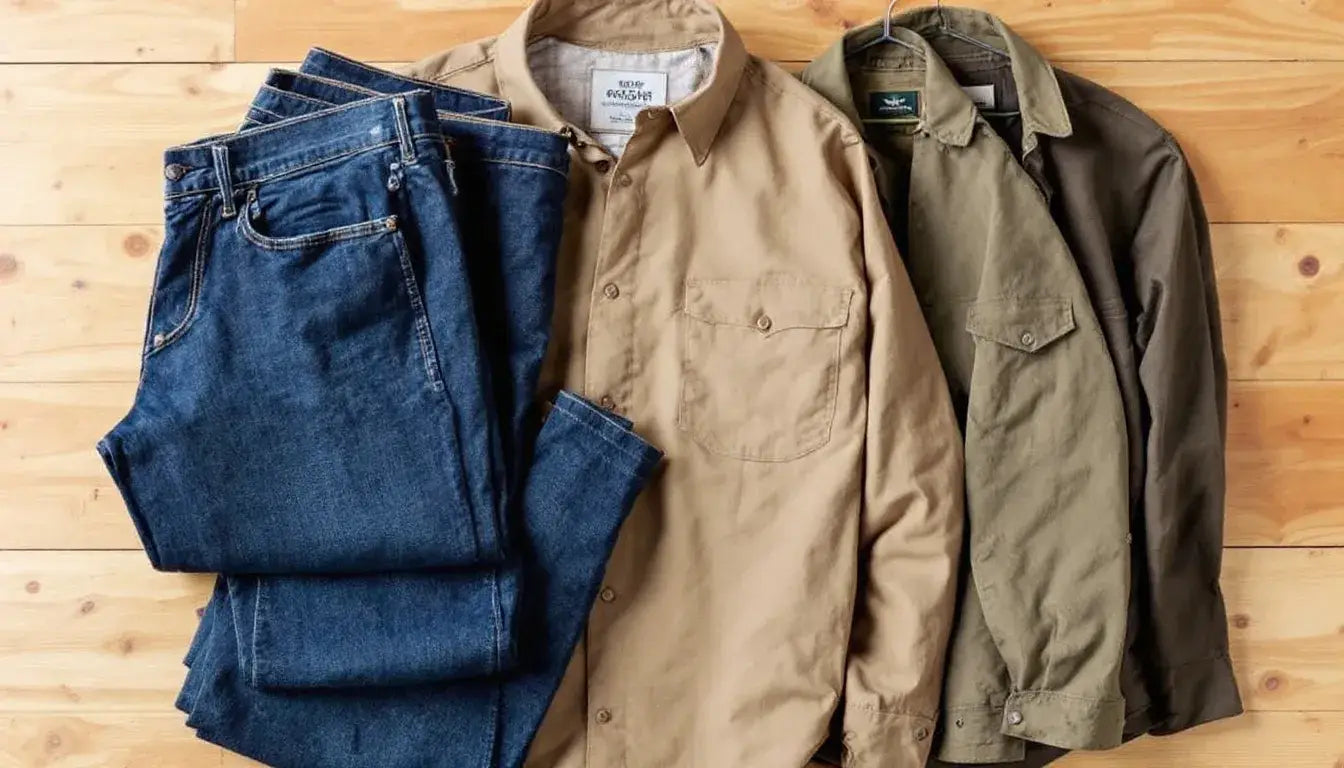
Home Textile Applications
Heavyweight cotton excels in home applications where durability and appearance matter:
-
Upholstery: Canvas and duck cloth for furniture covering
-
Bedding: Heavy sheets and comforters for warmth and longevity
-
Curtains and drapes: Substantial fabrics that hang properly and resist fading
-
Bags and accessories: Canvas totes and storage items requiring strength
Industrial and Commercial Uses
The robust nature of heavyweight cotton suits demanding commercial applications:
-
Tarpaulins and covers: Weather protection for equipment and materials
-
Awnings: Outdoor shade structures requiring UV and weather resistance
-
Protective clothing: Industrial garments needing chemical and abrasion resistance
-
Specialty applications: Art canvases, tent materials, and marine applications
Each application benefits from the higher GSM because the extra material provides enhanced performance in specific areas—whether that’s protecting against workplace hazards, maintaining professional appearance through multiple wash cycles, or providing the structural integrity needed for outdoor use.
Choosing the Right Heavyweight Cotton GSM
Selecting the appropriate fabric weight requires balancing multiple factors including intended use, climate conditions, and personal preferences. Fiber type also plays a significant role in determining fabric weight, thickness, and performance, so it should be considered when choosing the right GSM. Knit fabrics with the same weight (GSM) as heavyweight woven fabrics can provide similar warmth and density, making them suitable for comparable applications such as warm clothing or draped textiles. The right GSM ensures optimal performance while avoiding unnecessary bulk or expense.
General Guidelines by Application
340-400 GSM: Ideal for heavy t shirts, casual wear, and lightweight workwear. Provides durability upgrade over standard weights without excessive bulk.
400-450 GSM: Perfect for quality jeans, structured shirts, and moderate-duty applications. Offers excellent balance of comfort and performance.
450-550 GSM: Best for heavy-duty workwear, outdoor gear, and premium denim. Suitable when maximum durability is prioritized.
550+ GSM: Reserved for specialized applications like industrial canvas, extremely heavy denim, or situations requiring maximum protection and longevity.
Activity Level Considerations
Your lifestyle and how you’ll use the garment significantly impacts optimal GSM selection:
-
Office work: 340-400 GSM provides professional appearance with comfort
-
Physical labor: 450+ GSM offers necessary protection and longevity
-
Casual wear: 340-420 GSM balances durability with everyday comfort
-
Outdoor activities: 420+ GSM provides weather resistance and abrasion protection

Climate and Seasonal Considerations
Climate plays a crucial role in determining the best GSM for your needs:
Hot Weather Limitations Heavyweight cotton becomes less practical in consistently hot weather due to:
-
Reduced breathability compared to lightweight alternatives
-
Increased heat retention
-
Slower moisture evaporation
-
Greater physical weight for the wearer
Linen is a more breathable, lightweight option than heavyweight cotton, making it ideal for hot climates due to its airy qualities, though it is prone to creasing. Lower GSM fabrics are also preferred for summer clothing because they are lighter, more comfortable, and offer better breathability.
For hot climates, consider limiting heavyweight cotton to:
-
Early morning and evening wear
-
Air-conditioned environments
-
Specific workwear requirements where protection overrides comfort
When choosing alternatives for hot weather, lightweight fabrics like taffeta, silk, and those with an airy flair are ideal for making flowing dresses and blouses, providing comfort and a breezy aesthetic.
Cool and Variable Climate Benefits Heavyweight cotton excels in moderate to cool conditions:
-
Fall and spring: 340-420 GSM provides ideal temperature regulation
-
Winter layering: Higher GSM materials work excellently as base or mid-layers
-
Variable weather: Substantial fabrics adapt better to temperature swings
Regional Preferences Different regions show preferences based on climate patterns:
-
Northern climates favor 400+ GSM for extended cold seasons
-
Coastal areas with variable weather prefer 340-380 GSM for versatility
-
Mountain regions often choose 450+ GSM for durability and warmth
Layering Strategies
Heavyweight cotton integrates well into layering systems:
-
Base layer: 340-380 GSM for skin contact comfort
-
Mid layer: 380-450 GSM for insulation and structure
-
Outer layer: 450+ GSM for weather protection and durability
Understanding these layering principles helps you select materials that work together rather than fighting against each other for temperature control and comfort.
Care and Maintenance of Heavyweight Cotton
Proper care extends the life of heavyweight cotton while maintaining its appearance and performance characteristics. The dense construction of these fabrics requires adjusted washing and drying techniques compared to lighter materials.
Washing Requirements
Temperature Guidelines
-
First wash: Cold water (30°C/86°F) to minimize initial shrinkage
-
Regular washing: Warm water (40°C/104°F) for effective cleaning
-
Heavy soiling: Hot water (60°C/140°F) when necessary, accepting some shrinkage risk
Detergent Selection
-
Use liquid detergents that dissolve completely in the denser fabric structure
-
Avoid bleach-based products that can weaken cotton fibers over time
-
Consider enzyme-based detergents for better stain removal in thick fabrics
Washing Cycle Considerations
-
Extended wash cycles help detergent penetrate the dense fiber structure
-
Avoid overloading machines—heavyweight fabrics need room to move freely
-
Use gentle agitation to prevent excessive wear on fiber surfaces
Drying Methods and Timing
Heavyweight cotton requires longer drying times due to its density and water retention:
Air Drying Benefits
-
Prevents heat damage that can weaken cotton fibers
-
Eliminates shrinkage risk from high dryer temperatures
-
Maintains fabric texture and hand feel
-
Reduces energy consumption
Machine Drying Considerations
-
Use medium heat settings to balance drying speed with fabric protection
-
Remove garments while slightly damp to prevent over-drying
-
Clean lint filters frequently—heavyweight cotton sheds more initially
-
Expect 50-75% longer drying times compared to lightweight fabric
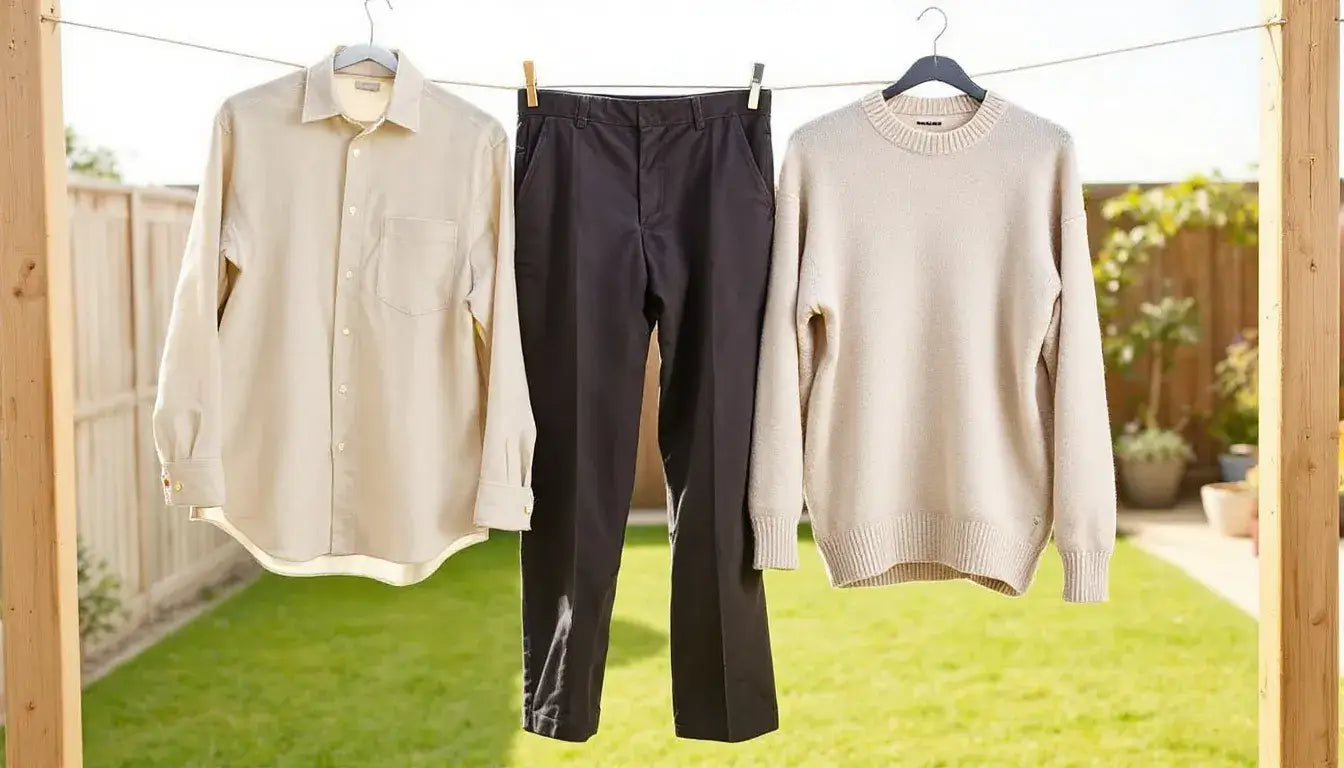
Ironing and Pressing Techniques
The substantial nature of heavyweight cotton affects ironing requirements:
-
Higher temperatures: Cotton setting (200°C/390°F) penetrates the thick material
-
Steam application: Essential for removing wrinkles from dense fabric structure
-
Pressing time: Longer contact time needed for effective wrinkle removal
-
Inside-out pressing: Protects surface finish and prevents shine
Long-term Maintenance Tips
Color Preservation
-
Wash inside-out to protect surface fibers from abrasion
-
Use cold water for colored garments to prevent dye bleeding
-
Separate heavyweight items from lighter fabrics to prevent color transfer
Shape Retention
-
Store heavier garments properly folded or hung on substantial hangers
-
Avoid overstretching wet heavyweight cotton during handling
-
Reshape garments while damp for best results
Fabric Texture Maintenance
-
Brush heavyweight cotton occasionally to maintain surface texture
-
Avoid fabric softeners that can coat fibers and reduce breathability
-
Professional cleaning for structured garments maintains shape and appearance
Quality Factors Beyond GSM
While GSM provides crucial information about fabric weight, several other factors significantly impact the quality and performance of heavyweight cotton. Understanding these elements helps you evaluate fabric quality more comprehensively.
The construction method, such as whether the fabric is woven, plays a key role in determining the softness, absorbency, and durability of high GSM towels.
Additionally, the quality of fibres and the specific fibre type used—such as Giza, Supima, or other cotton varieties—directly influence the strength, feel, and longevity of heavyweight cotton fabrics.
Cotton Fiber Quality
The source and type of cotton dramatically affects how a heavyweight fabric performs:
Premium Cotton Varieties
-
Egyptian cotton: Long fibers create smoother, stronger fabrics even at high GSM
-
Pima cotton: Superior strength and softness in heavyweight applications
-
Organic cotton: Grown without chemicals, often softer but requiring careful processing
Fiber Length Impact
-
Longer fibers (staple length) create stronger, smoother heavyweight fabrics
-
Short fibers can create rougher textures and reduced durability
-
Fiber quality becomes more noticeable in thicker fabrics where texture is prominent
Weave Construction Differences
The way cotton yarns are interlaced significantly affects fabric performance beyond just weight:
Plain Weave
-
Strongest construction for heavyweight applications
-
Even distribution of stress across the fabric
-
Best choice for workwear and hard wearing applications
Twill Weave
-
Diagonal pattern provides flexibility while maintaining strength
-
Excellent drape characteristics even in heavier weights
-
Popular for denim and structured garments
Canvas Weave
-
Tight plain weave using heavy yarns
-
Maximum durability for the same GSM
-
Ideal for bags, upholstery, and industrial applications
Thread Quality and Construction
Yarn Weight and Twist
-
Heavier yarns create more substantial fabrics
-
Higher twist rates increase strength but can affect comfort
-
Ring-spun cotton creates superior texture compared to open-end spinning
Thread Count Interaction
-
Thread count affects how dense the weave feels
-
Higher thread counts with appropriate GSM create luxury heavyweight fabrics
-
Balanced thread counts prevent fabric distortion under stress
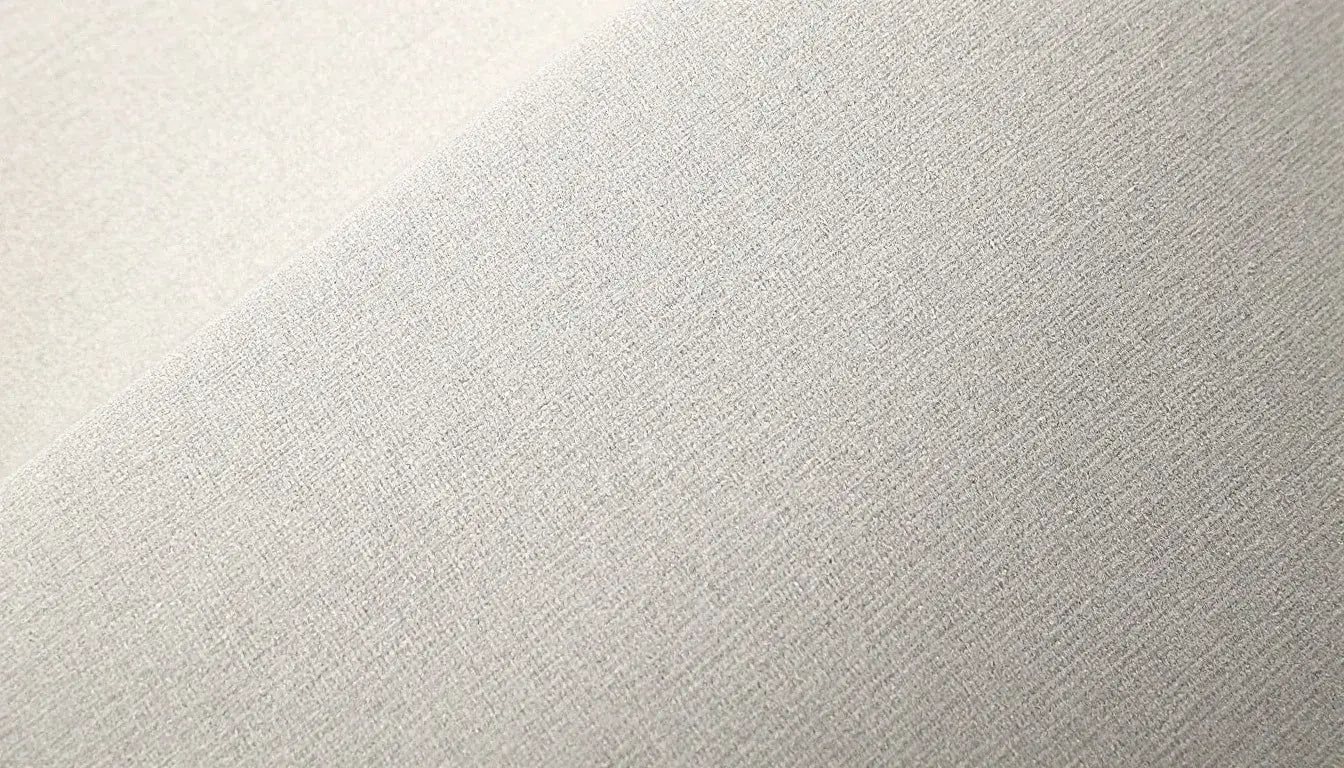
Finishing Treatments
Post-weaving treatments can enhance heavyweight cotton properties:
Mercerization
-
Chemical treatment that increases strength and luster
-
Particularly beneficial for heavyweight cotton that will be frequently washed
-
Improves dye uptake for better color retention
Sanforization
-
Pre-shrinking process that prevents excessive shrinkage
-
Essential for heavyweight garments where fit matters
-
Reduces size variation between different weights of the same fabric
Brushing and Napping
-
Surface treatments that affect texture and warmth
-
Can increase perceived weight without changing actual GSM
-
Popular for comfort-focused heavyweight items like sweatshirts
Cost Considerations and Value
Understanding the economics of heavyweight cotton helps you make informed purchasing decisions that balance upfront costs with long-term value.
Pricing Factors
Material Costs Heavyweight cotton costs more to produce due to:
-
Higher raw cotton content per square yard
-
Increased processing time and energy
-
Specialized equipment for handling thicker materials
-
Quality control requirements for consistent weight
Manufacturing Complexity
-
Cutting thick materials requires sharper tools and more time
-
Sewing heavyweight fabrics needs stronger machines and specialized needles
-
Quality control becomes more critical with expensive materials
-
Shipping costs increase due to weight
Cost-Per-Wear Analysis
The true value of heavyweight cotton becomes apparent when calculating cost over the garment’s lifetime:
Lightweight vs. Heavyweight Comparison
-
Lightweight t shirt: $15, lasts 12 months = $1.25/month
-
Heavyweight t shirt: $35, lasts 36 months = $0.97/month
This analysis shows heavyweight options often provide better long-term value despite higher initial costs.
Factors Affecting Lifespan
-
Washing frequency and care methods
-
Activity level and wear conditions
-
Initial fabric quality and construction
-
Climate and storage conditions
Value Optimization Strategies
When Heavyweight Cotton Provides Best Value
-
Workwear subject to daily abuse
-
Garments worn frequently (more than twice weekly)
-
Items exposed to harsh conditions
-
Situations where professional appearance matters long-term
Budget-Friendly Alternatives
-
Look for sales on previous season heavyweight items
-
Consider mid-range GSM (340-380) for moderate improvement over standard weights
-
Buy heavyweight basics rather than trendy items for better cost amortization
-
Choose versatile colors that work across multiple seasons
Shopping Tips for Heavyweight Cotton
-
Compare GSM specifications between brands—higher price doesn’t always mean higher quality
-
Look for fiber content information beyond just GSM measurements
-
Check care instructions—some heavyweight fabrics require expensive professional cleaning
-
Consider total wardrobe needs rather than individual item costs
Investment Prioritization Focus heavyweight cotton purchases on:
-
Items worn most frequently
-
Garments requiring professional appearance
-
Workwear and protective clothing
-
Pieces exposed to harsh conditions
The key to maximizing value lies in matching fabric weight to actual needs rather than automatically choosing the heaviest option available.
Different weights serve different purposes, and the best gsm for your application balances performance requirements with practical considerations like cost, comfort, and care requirements.
When selecting heavyweight cotton, consider it an investment in durability and performance rather than just another clothing purchase. The substantial nature of these fabrics means they’ll likely outlast several lighter alternatives, making the higher initial cost worthwhile for appropriate applications.
Understanding heavyweight cotton GSM empowers you to make informed decisions about fabric selection, whether you’re choosing materials for personal use, professional applications, or commercial purposes. The right fabric weight can significantly impact satisfaction, performance, and long-term value—making this knowledge a crucial factor in textile selection.
Frequently Asked Questions (FAQs)
1. What does GSM mean in heavyweight cotton t shirts?
GSM stands for grams per square meter and measures the weight of the fabric. Higher GSM indicates a heavier, thicker, and more durable cotton fabric, which is typical for heavyweight cotton t shirts.
2. Are heavyweight cotton t shirts less breathable than lighter ones?
Yes, heavyweight cotton t shirts are denser and less breathable than lightweight fabrics, but they still offer good air circulation and moisture-wicking properties due to the natural cotton fibers.
3. How should I care for my heavyweight cotton t shirt to ensure longevity?
Wash heavyweight cotton t shirts in cold or warm water with gentle detergents, avoid bleach, air dry when possible, and iron on the cotton setting with steam to maintain fabric quality and shape.
4. What are the benefits of choosing a heavyweight cotton t shirt over a lightweight one?
Heavyweight cotton t shirts provide superior durability, better insulation, maintain their shape longer, and often become more comfortable with age, making them ideal for regular wear and cooler weather.
5. Can heavyweight cotton t shirts be used for custom printing or designs?
Yes, heavyweight cotton t shirts are excellent for customization due to their thick, sturdy fabric that holds prints well and maintains the design’s integrity over time.

Materials & Fabrics for Clothing Production
Explore cotton, French terry, jersey, fleece, and sustainable blends used in premium apparel manufacturing.
Explore Premium Apparel Fabrics Guide
Printing Techniques for Apparel Production
Screen printing, embroidery, puff prints, and digital methods for custom clothing manufacturing.
Explore Custom Apparel Printing Techniques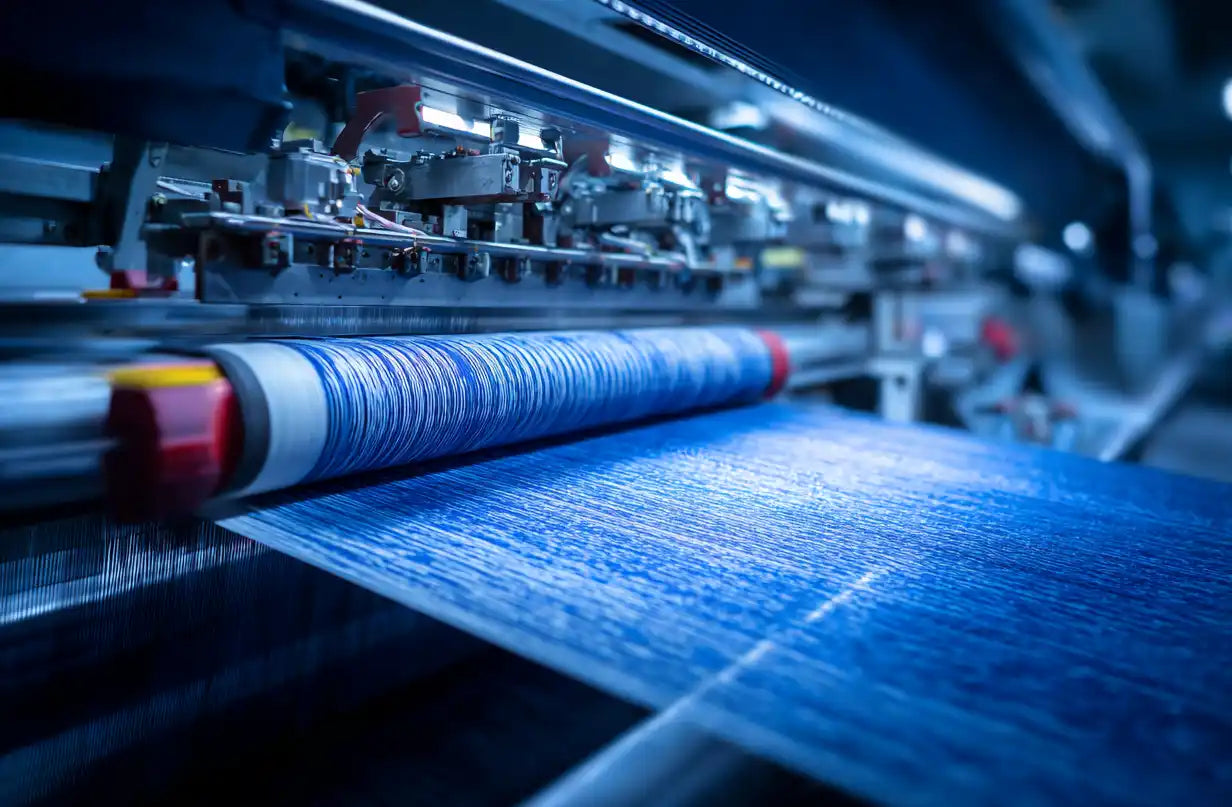
Dyeing Techniques in Clothing Manufacturing
Garment dye, pigment, acid wash, and stone wash finishes that create unique apparel designs.
Compare Apparel Finishing Techniques
Popular Clothing Items for Custom Apparel
Hoodies, joggers, t-shirts, leggings, and biker shorts — essentials for every apparel collection.
Explore Popular Custom Clothing Items
Trends & Designs in Modern Apparel
Oversized fits, streetwear influences, and activewear styles driving custom clothing production.
Explore Trends & Designs for Apparel Development
Sustainable & Ethical Clothing Production
OEKO-TEX® certified fabrics, organic cotton, and ethical apparel manufacturing in Portugal.
Understand Sustainable & Ethical Clothing Production
Essentials for Custom Clothing Production
Custom labels, packaging, and trims that elevate your apparel brand in production.
Explore Essentials for Custom Clothing Production
Resources for Custom Clothing Production
Startup guides, logistics support, and scaling strategies for apparel brands and wholesale clients.
Explore Resources for Custom Clothing Production
Clothing Manufacturing Glossary
Explore a complete glossary of clothing and garment manufacturing terms
The Complete Clothing Manufacturing Glossary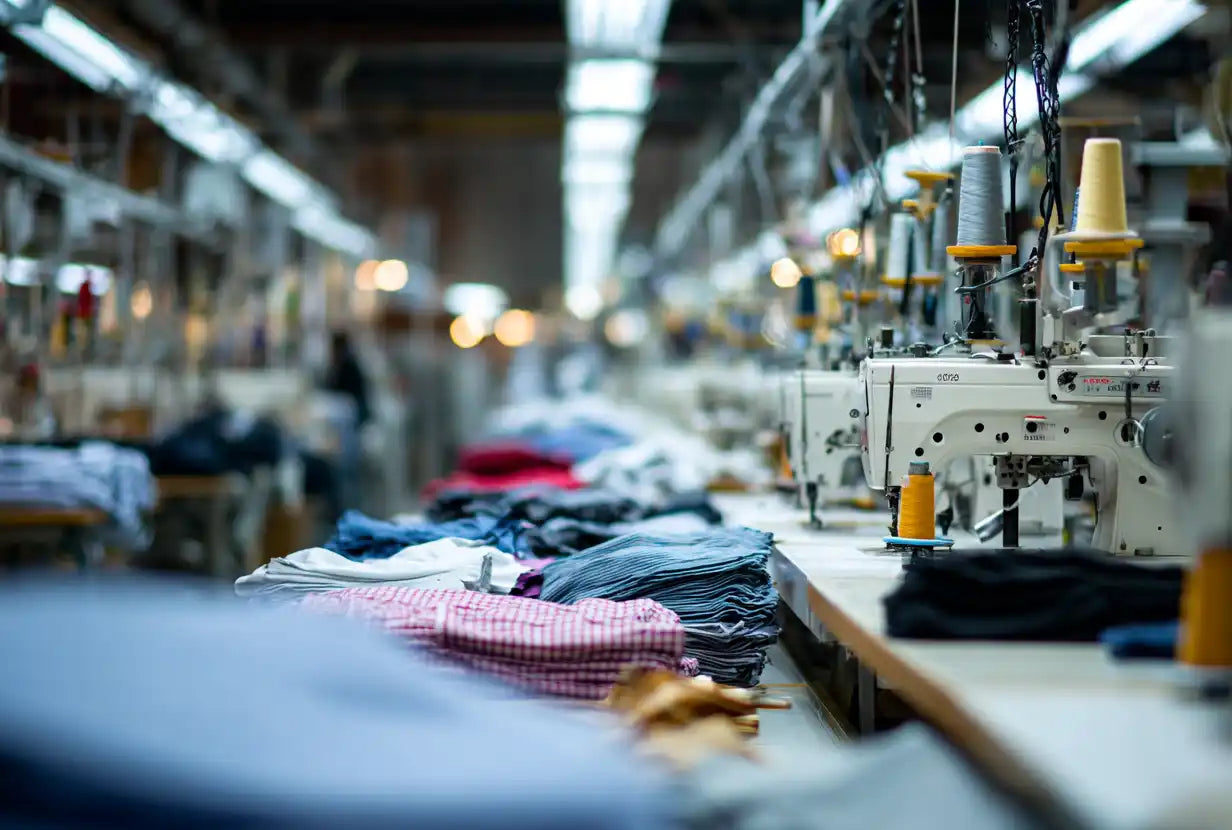
The Best Clothing Manufacturers
Explore global clothing manufacturers by country
Explore The Best Clothing Manufacturers
The Latest Clothing Industry Updates in 2025
Discover the latest news about important topics in the clothing industry in 2025,
Stay On Top Of Clothing Industry Updates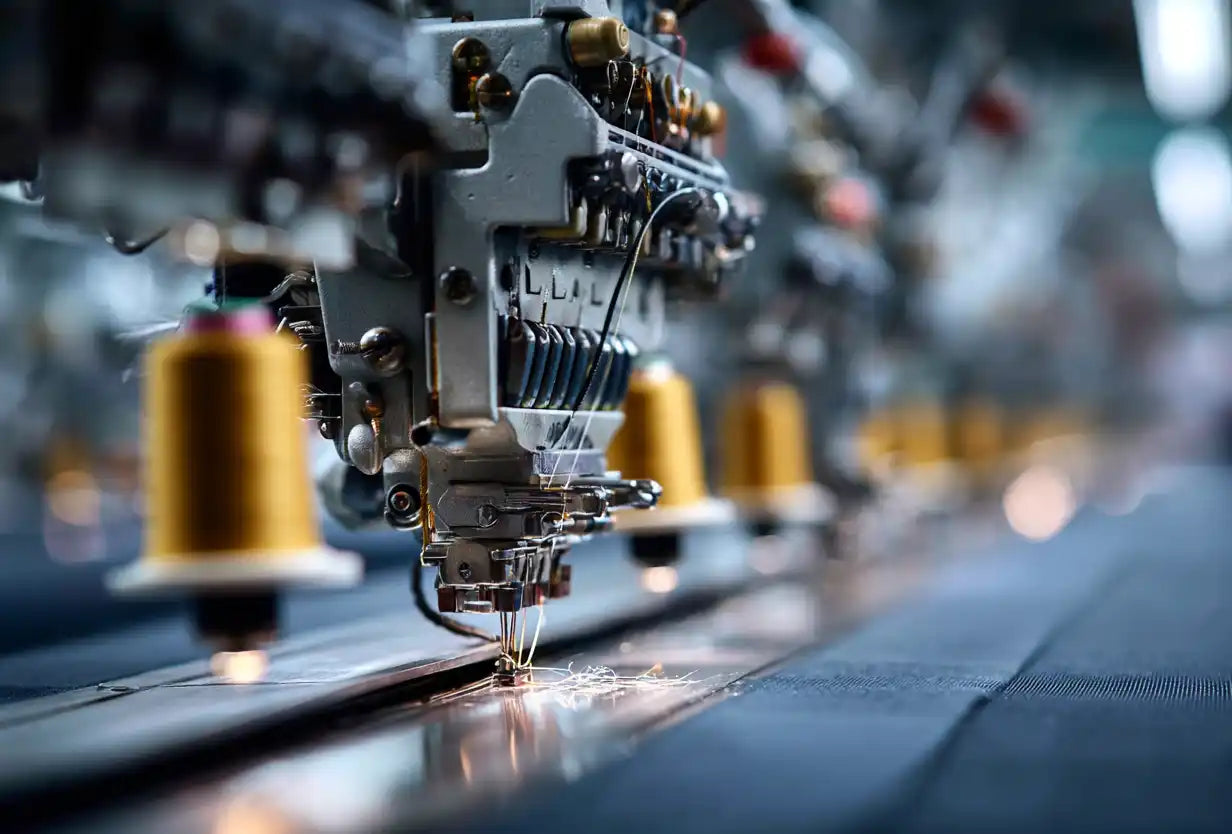
Worldwide Best Manufacturers of Clothes in 2026
Top clothing manufacturers worldwide organized by product type
Find The Worldwide Best Manufacturers of Clothes